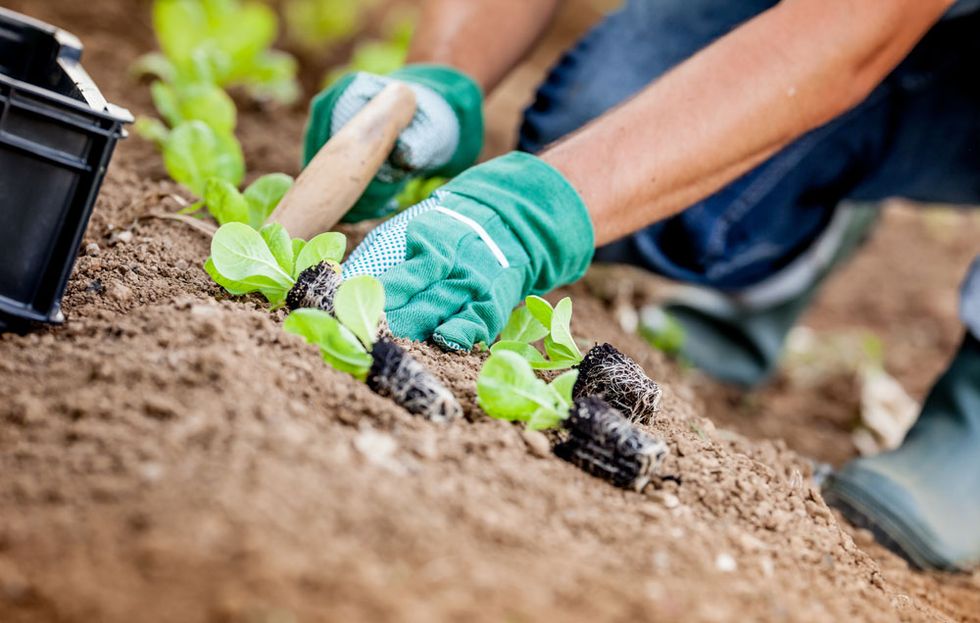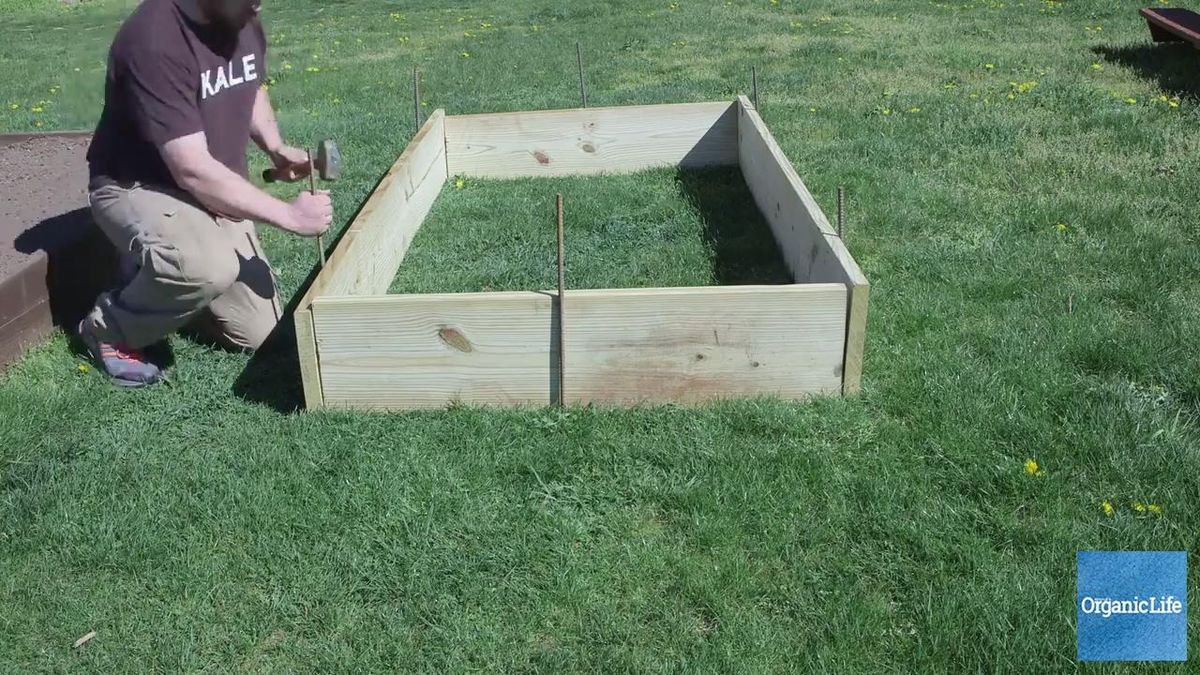Lettuce greens are so easy to grow, so nutritious, and so delicious picked fresh from the garden, that everyone should grow them. Grow lettuce in the vegetable garden, tuck it into flowerbeds, or cultivate it in raised beds or containers. With regular watering, shade from hot sun, and succession planting, you can enjoy homegrown lettuce almost year-round in much of the country.
Types Of Lettuce
Home gardeners can choose from dozens of different cultivars, each with its own special taste, appearance, and texture.
Cabbagelike crisphead, or iceberg, lettuce stands up to hot weather and ships well; it is the old standby in stores. It also has the thickest, crunchiest leaves of any lettuce. Iceberg lettuce is the least nutritious type, but like all lettuce, it is a good source of dietary fiber. After years of being dismissed as worthless, iceberg lettuce has undergone a renaissance among chefs, so you’re as likely to encounter an iceberg wedge with house-made blue cheese dressing in a restaurant as a salad of spring greens or mesclun mix.
(Whether you're starting your first garden or switching to organic, Rodale’s Basic Organic Gardening has all the answers and advice you need—get your copy today!)
The crunchy, spoon-shaped leaves of romaine, or cos, lettuce are much more nutritious. In addition to being heat tolerant and easy to grow, the big-leaved types also produce crisp, white hearts that can substitute for celery. Romaine is the traditional choice for Caesar salads. Red-leaved and red-speckled romaine lettuces are especially beautiful in salads. Because romaine lettuce is both crunchy and nutritious, it’s also a great choice for sandwiches.
Related: The Most Delicious Lettuce Varieties Worth Planting
Butterhead, or Boston, lettuce has soft, tender, rich green outer leaves and white to yellowish hearts. It is also high in nutrition, and its taste and texture are excellent. Many butter-heads, particularly the quick-maturing cultivars, require cool weather and an excellent soil to produce well.
Fast-growing, nutritious leaf lettuce tolerates much warmer temperatures than head lettuce. Most cultivars have loose, open growth habits and leaves that range from smooth to frilly. Harvest the outer leaves of leaf lettuces, and the plants will grow new ones for later picking, or pull entire heads at once.
Lettuces sold as spring mix or mesclun mix are typically blends of several loose-leaf cultivars that are harvested when they’re just a few inches tall. You can find many different combinations available from seed companies, or mix your own favorites for a signature blend. Mesclun also typically features a few spicier greens like radicchio and mustard.
Related: Microgreens—The Salad You Can Grow Inside
Planting Lettuce
Lettuce needs a humus-rich, moisture-retentive, but well-drained soil with plenty of nitrogen.
Broadcast the seeds and rake lightly to cover them, or sow seeds ¼ inch apart and as thinly as possible in rows 1½ feet apart. A small seed packet will plant a 100-foot row and produce some 80 heads, or about 50 pounds of leaf lettuce. Germination rate is over 80 percent.
Although lettuce is primarily considered a cool-season crop, it is possible to extend the harvest with some careful planning. If you’re a real lettuce lover, try the following schedule:
1. Start romaine, iceberg, or other head lettuces indoors 4 to 6 weeks before your last frost date, making three small sowings at weekly intervals. Set out the seedlings successively as soon as the ground is workable. At the same time, direct-seed leaf lettuce outdoors at 2-week intervals. If the soil temperature is at least 35°F, germination should take place in 6 to 12 days. If you plan to harvest only outer leaves as the plants grow, or harvest the crop for spring mix or mesclun, you can sow the entire loose-leaf crop at once. Choose cold-tolerant cultivars for spring planting (you can find them individually or as a “cool-season mix” or “winter mix” of cultivars from many seed companies).
Related: 9 Salad Greens You Should Be Growing
2. As the weather warms, plant heat-resistant cultivars (you can find them individually or as a “warm-season mix” of cultivars from many seed companies). If you place them in shady areas and give them adequate water, they are less likely to bolt and go to seed during hot spells. You can also cover the lettuce bed with floating row cover to shade it, but leave the ends (and, preferably, the sides) open for air circulation. If the earth is very warm, try presprouting the seeds to get better germination. Place the seeds on wet blotting paper or mix them with a little damp peat moss and perlite; store in the refrigerator for 5 days before sowing.
3. In midsummer, switch back to head or romaine types, making successive sowings—again, in shady areas—for a fall harvest that can last until frost. In milder climates, cover immature heads with cloches to prolong the harvest; in cold-winter areas, transplant a few heads into pots and let them continue growing in a greenhouse or sunny window. You can also sow cold-tolerant loose-leaf lettuces as you did in spring, keeping the bed evenly moist and shaded until outdoor temperatures cool down. If you have a cold frame or a greenhouse with an in-ground bed, you can continue sowing lettuce, extending the season even further.
Related: A Plan For Growing Lettuce All Season Long
Lettuce Growing Guidelines
When the seedlings have four leaves, thin head or romaine lettuce to 12 to 16 inches apart. Do the same for leaf lettuce unless you plan to harvest entire plants instead of leaves; in that case, 4-inch spacing is adequate. Thin butterheads to 3 to 5 inches apart.
Lettuce is 90 percent water and has very shallow roots, so keep the soil surface moist but not soggy. Make sure the crop gets at least 1 inch of water a week from rain or irrigation; otherwise, leaves can be thin and bitter, and the plants might bolt to seed. To help prevent disease, try to water on sunny mornings, so the leaves can dry by evening. After a good rain or watering, apply a thick layer of mulch to conserve moisture, suffocate weeds around the easily damaged roots, and keep lettuce leaves free of dirt. To promote quick growth, side-dress with compost or fish emulsion once or twice during the growing season.
Just before bolting, lettuce plants start to elongate and form a bitter sap. To keep this from happening, pinch off the top center of the plant. Pull up and discard any plant that goes to seed. If you are a seed saver, wait and save seeds from the last plants to bolt, since quickness to bolt is a bad trait. Seed savers should also be aware that different lettuce cultivars can cross with each other and with wild lettuce, so next year’s plants may not come true from your saved seed.
Related: 13 Really Weird Things Organic Gardeners Do That Actually Work
Lettuce Growing Problems
The most likely pests are aphids, cutworms, and slugs.
Soggy soil and crowded plants can encourage bottom rot, a disease that turns lettuce plants black and foul-smelling. There are only a few varieties that are resistant to this disease, which has spores that can persist for years in the soil. If you’ve had problems with bottom rot, choose varieties with an upright form rather than a spreading form, and try planting your lettuce plants on 4-inch-tall ridges of soil. Be careful to avoid wetting the leaves when you water.
Gray mold makes grayish green or dark brown spots on lower leaves and is usually brought on by damp, overcast weather. Injured seedlings are particularly vulnerable. Pull up any infected plant and dispose of it far from the garden.
Related: Strategies For Lettuce Success
Harvesting Lettuce
Pick lettuce in the morning to preserve the crispness it acquires overnight. Watch your crop closely, as mature plants deteriorate quickly. To test the firmness of heading types, press down gently on lettuce hearts with the back of your hand; don’t pinch them, as this can bruise the hearts. Use a sharp knife to cut heads below the lowest leaves, or pull plants out by the roots. Harvest leaf types as needed. Lettuce tastes best when eaten fresh but will keep up to 2 weeks when refrigerated.
Related: How To Use Up Sad, Wilted Lettuce With 1 Simple And Delicious Trick














